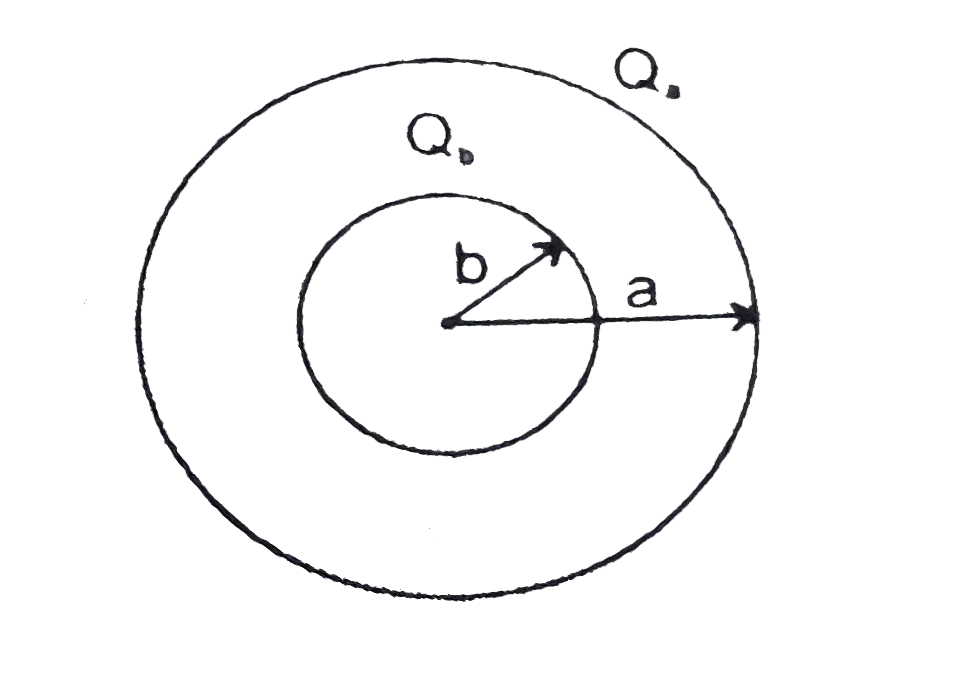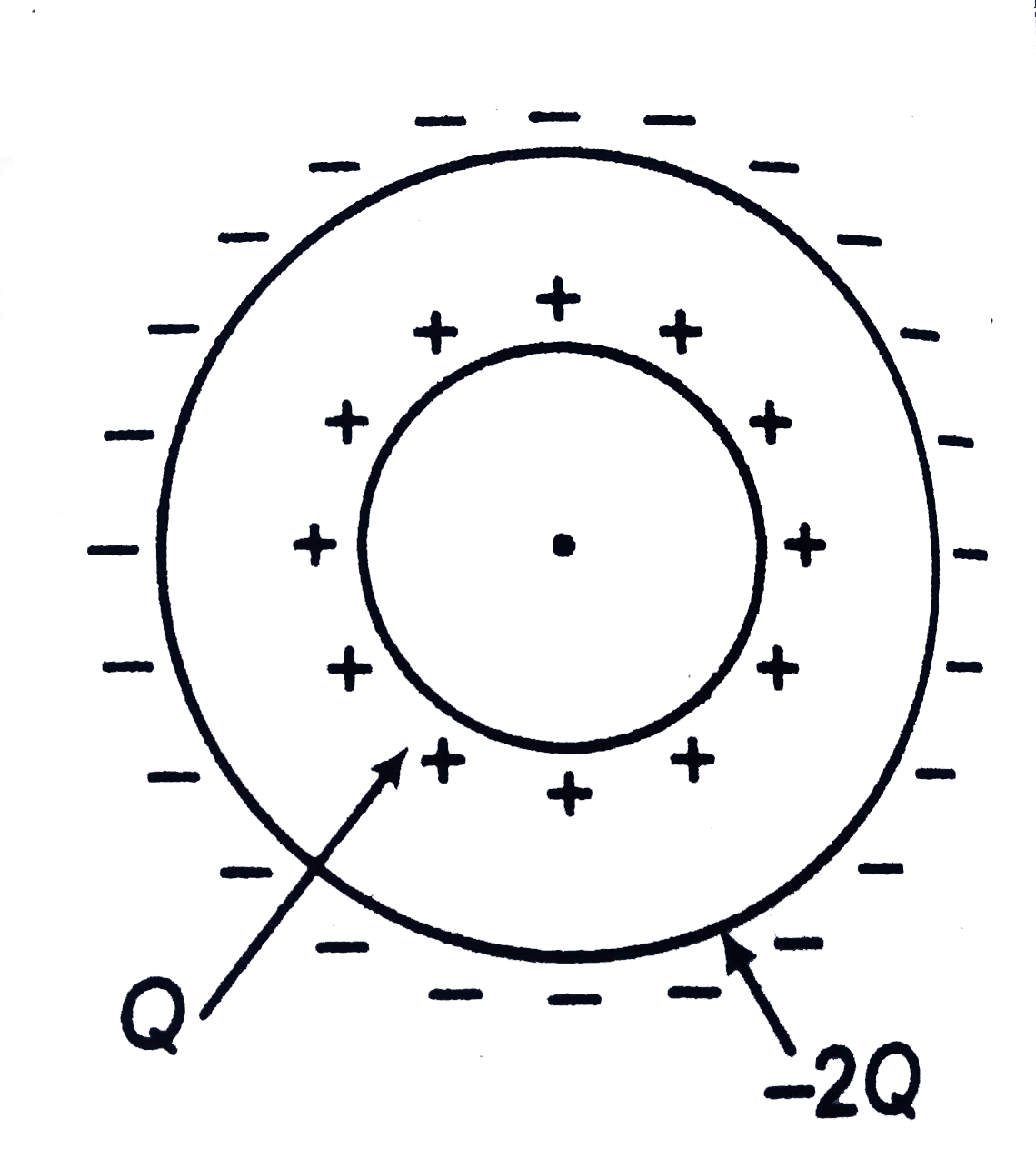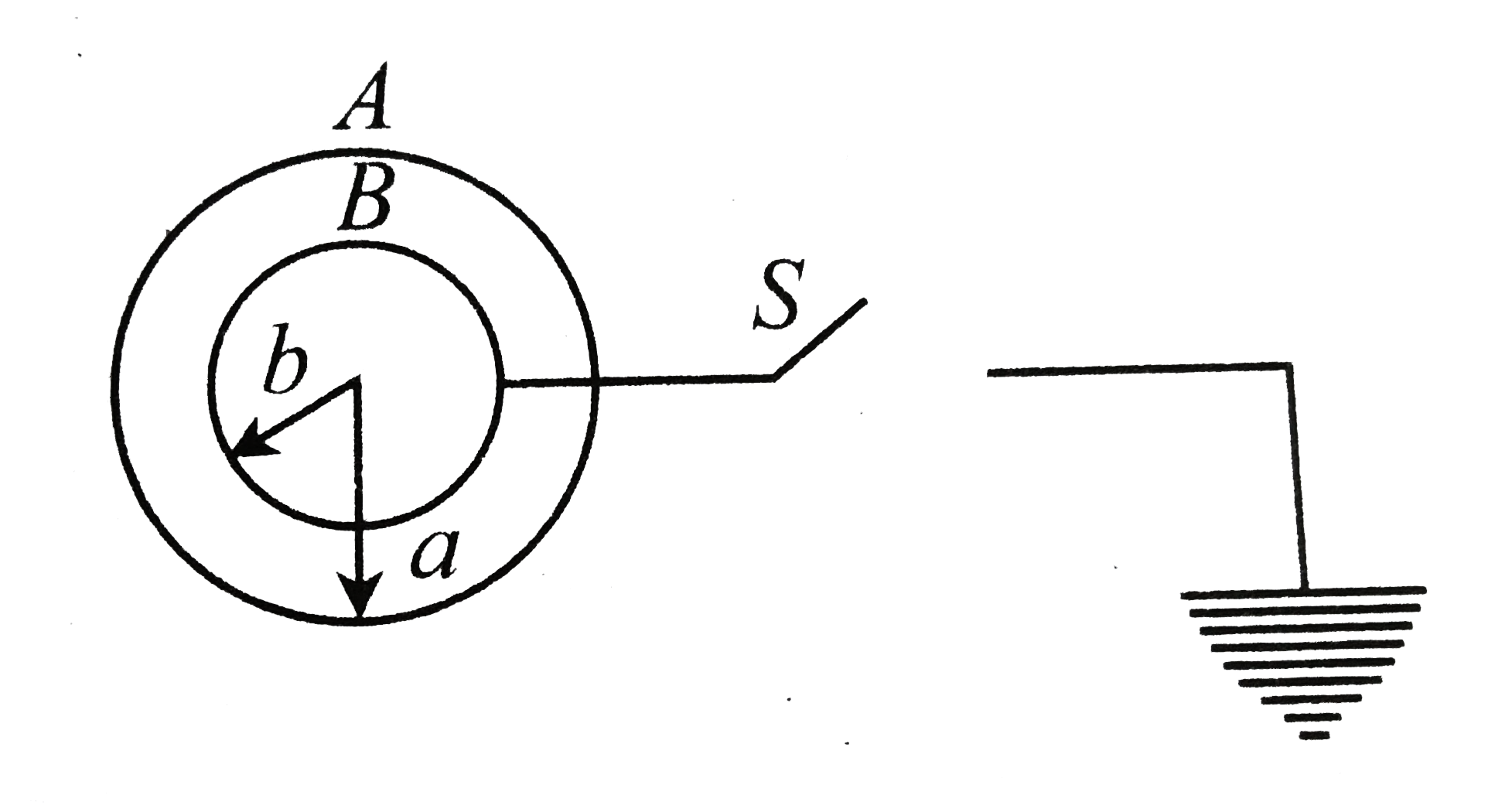Two hollow concentric non-conducting spheres of radius the a and b(a>b) contain charges Qa and Qb respectively. Prove that potential difference between the two spheres is independent of charge on outer sphere. If outer sphere is given an extra charge, is there any change in potential difference ?
Vinner sphere=KQbb+KQaa
Vouter sphere=KQba+KQaa
Vinner sphere−Vouter sphere=KQbb−KQba
∴ΔV=KQb[1b−1a]
Which is independent of charge on outer sphere. If outer sphere in given any extra charge, then there will be no change in potential difference.

Topper's Solved these Questions
- ELECTROSTATICSBOOK - RESONANCECHAPTER - ELECTROSTATICSEXERCISE - Problems
22 Videos
- ELECTROSTATICSBOOK - RESONANCECHAPTER - ELECTROSTATICSEXERCISE - Exercise-1 Section (A)
9 Videos
- ELECTROMAGNETIC INDUCTIONBOOK - RESONANCECHAPTER - ELECTROMAGNETIC INDUCTIONEXERCISE - A.l.P
19 Videos
- EXPERIMENTAL PHYSICSBOOK - RESONANCECHAPTER - EXPERIMENTAL PHYSICSEXERCISE - PART -II
10 Videos
Similar Questions
Two concentric conducting spheres of radii R and 3R carrying charges Q and 2Q respectively.If the charge on inner sphere is doubled.The potential difference between inner and outer spheres will..?
View SolutionThere are three conecentric hollow spheres of radii a, b and c and they are charged with charges q1,q2 and q3 respectively. Calculate the potential of the spheres.
View Solution
Knowledge Check
Two concentric conducting spheres of radii R and 2R are crrying charges Q and −2Q, respectively. If the charge on inner sphere is doubled, the potetial differece between the two spheres will
 Abecomes two timesBbecome four timesCbe halvedDremain same
Abecomes two timesBbecome four timesCbe halvedDremain sameConsider two concentric metal spheres. The outer sphere is given a charge Q>0, then
 ,Athe electrons will flow from earth to inner sphere if S is shortedBthe electrons will flow from inner sphere to the earth if S is shortedCthe shorting of S will produce a charge of −Q on the inner sphereDnone of these
,Athe electrons will flow from earth to inner sphere if S is shortedBthe electrons will flow from inner sphere to the earth if S is shortedCthe shorting of S will produce a charge of −Q on the inner sphereDnone of theseA solid conducting sphere, having a charge Q, is surrounded by an uncharged conducting hollow spherical shell. Let the potential difference between the surface of the solid sphere and that of the outer surface of the hollow shell be V. If the shell is now given a charge of -4 Q, the new potential difference between the same two surfaces
A4 VB2 VC−2VDV
A conducting sphere is enclosed by a hollow conducting shell. Initially the inner sphere has a charge Q while the outer one is uncharged. The potential difference between the two spherical surface is found to be V. later on the outer shell is given a charge -4Q. The new potential difference between the two surfaces is : (A) V (B) −V (C) −2V (D) 2V
View SolutionA metal sphere with a charge Q is surrounded by an uncharged concentric thin spherical shell. The potential difference between them is V. If the shell is now given an additional charge Q, what is the new potential difference between them?
View SolutionA and B are two thin concentric hollow conductors having radii a and 2a and charge 2Q and Q, respectively. If potential of outer sphere is 5V, then potential of inner sphere is
View SolutionA solid conducting sphere having a charge Q is surrounded by an uncharged concentric conducting hollow spherical shell. Let the potential difference between the surface of the solid sphere and that of the outer surface of the hollow shell be V. If the shell is now given a charge of −3Q, the new potential difference between the same two surfaces is :
View SolutionA and B are two hollow, concentric, conducting spheres, with A inside B. A and B are given Q1 and Q2 respectively. If they are now joined by a thin wire, whtat charge will flow from A to B?
View Solution
